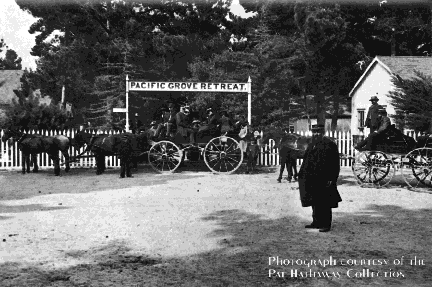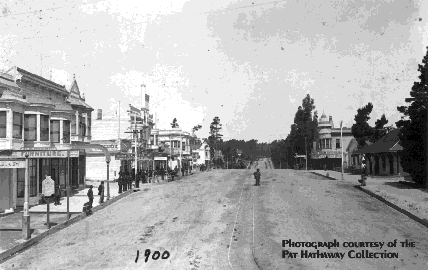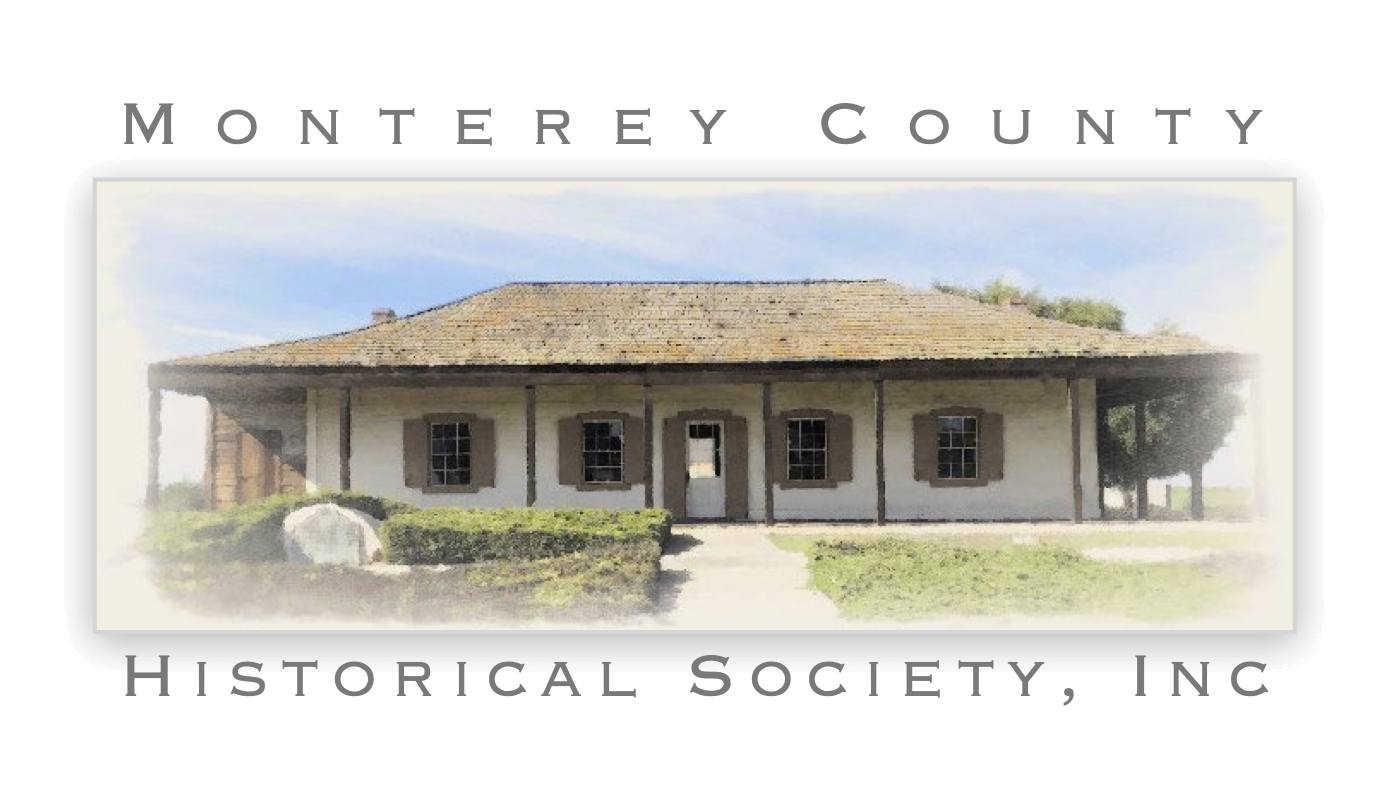Located on the Monterey Peninsula between Monterey and Pebble Beach, and hailed as “The Last Hometown,” the quiet community of Pacific Grove juts into the Pacific Ocean and boasts over one thousand Victorian homes and cottages.
The most hated and feared man of his time, David Jacks, donated 100 acres of land to the Methodist Episcopal Church in 1875 to establish a “Christian Seaside Resort.” Through dubious means, Jacks, the son of a Scottish immigrant, had acquired title to over 7,000 acres of land in this area–virtually the entire Peninsula. He loaned $30,000 to the Pacific Grove Retreat Association, which had formed during that first year, to lay out streets and make other improvements. Jacks foreclosed on the unsold lots a short time later when the Association experienced a financial setback and could not meet its mortgage payment. The Church having publicized and popularized the area, Jacks now found a ready market.
The Retreat opened with three weeks of prayer meetings, holding them in an enormous tent setup where Jewell Park is now located. Sections of the retreat acreage were subdivided into thirty-by-sixty-foot lots, intended for tents. The rocky point which was their site was named “Lovers of Jesus Point,” now known as “Lover’s Point.”
In the early 1880s Jacks sold the Pacific Grove property and some adjoining land, to The Pacific Improvement Company–manned by the “Big Four,” Crocker, Hopkins, Stanford, and Huntington, (the parent company of Del Monte Properties Company, now The Pebble Beach Company).
The Retreat officials were concerned that they might lose their strict moral control of the new community, but Jacks had protected them in the terms of the sale. They could still ban cards, dice, billiards, dancing, liquor, and on Sundays, swimming and the sale of anything except medicine. Title to the property could be canceled for any violation. Window shades could not be pulled entirely down, and officials had the right to enter and search a dwelling at any time. Many of these “blue laws” are still on the books today. The sale of liquor was prohibited until 1969. The morals of swimmers and sunbathers were strictly protected. No one could appear on the beach unless clothed in opaque material ” worn in a manner as to preclude form, from above the nipples of the breast to below the crotch.” Furthermore, bathing suits had to have “double crotches or a skirt of ample size to cover the buttocks.” There was a curfew for those under 18, and they had to be off the streets by 8 on winter evenings and 9 in the summer. The Retreat surrounded itself with a fence on three sides and kept its gate padlocked, separating itself from “disdainful” Monterey. For 10 years Pacific Grove maintained its character as a camp meeting ground occupied in summer.

When the Pacific Improvement Company opened the lavish Hotel Del Monte in 1880, floods of tourists arrived. When the hotel burned in 1887, the company started to rebuild immediately, but in the meanwhile constructed the El Carmelo Hotel in Pacific Grove on Lighthouse between Grand and Fountain Avenues. When the new Del Monte reopened the El Carmelo was a place for tourists of modest means to come at $2 a day in one of its 114 rooms.
Many of the visitors returned to purchase lots which had gone up from $50 to $135. They built homes on the tiny lots, intended for tents, many of which still stand shoulder to shoulder. Two-story Victorian mansions began to appear. Today over 500 homes have been approved by the Pacific Grove Heritage Society to wear green plaques showing the year they were built and their original owner. Examples of Gothic Revival, Colonial Revival, Queen Anne, Stick/Eastlake, Tudor and many other Victorian styles are represented in this building period. By 1890 the city had a permanent population of 1500, and 5 to 6 times that number tented or rented there in the summer. Real estate began to replace religion, and a weekly newspaper named the Pacific Grove Review appeared. A little drygoods store in 1891, called the Popular, was opened by Rensaler Luther Holman which later grew into a large department store which occupies the site of the old El Carmelo Hotel.
The Pacific Improvement Company contributed $10,000 toward the construction of a new $25,000 church, and allowed the community to share its water supply from the Carmel River. In 1889, the Southern Pacific Railroad extended service to the town. In the 1880s, Benjamin Langford, a state senator who had property in the town, became fed up with coming in the pedestrian gate and walking a mile to the retreat office for the gate key in order to open the gate for a carriage to pass and opened the gate with an axe. Soon afterward the entire town fence came down. Among the organizations to choose the Pacific Grove Retreat for meetings were the Chautauqua movement, the YWCA, the YMCA, a Farmer’s Institute, and a School of Music among others. The Asilomar Conference Grounds, now owned by the State, was originally a YWCA retreat.
In July 1889, the city became incorporated, and the city celebrates its birthday during its annual Feast of Lanterns celebration. Many seasonal festivities are celebrated by residents and visitors. In the spring, The Good Old Days features a parade, quilt show, an arts and craft festival, and other events. The Feast of Lanterns draws huge crowds for its pageant, fireworks and other events. The fall return of the migratory Monarch butterfly which winters in Pacific Grove, is celebrated in October by the Butterfly Parade and Bazaar. Fall also brings the Victorian Home tour, during which homes, churches, inns, and businesses are opened to the public for the price of a ticket. Whale watching along shore or on tour boats is great during December and January as California Greys migrate along the coast to Mexico where they give birth.

Pacific Grove, once a dense forest, is relatively treeless, which causes it to have a much cooler climate than when David Jacks persuaded the Methodist Episcopal Church to select the Monterey Peninsula rather than another location for its retreat. Today’s visitor can rent a kayak, hike or bike alongside the ocean on the Recreation Trail, shop in little shops or factory outlets, investigate tidepools, swim, surf, fish, visit the Monterey Bay Aquarium, or the Pacific Grove Natural History Museum. There’s something for everybody.


